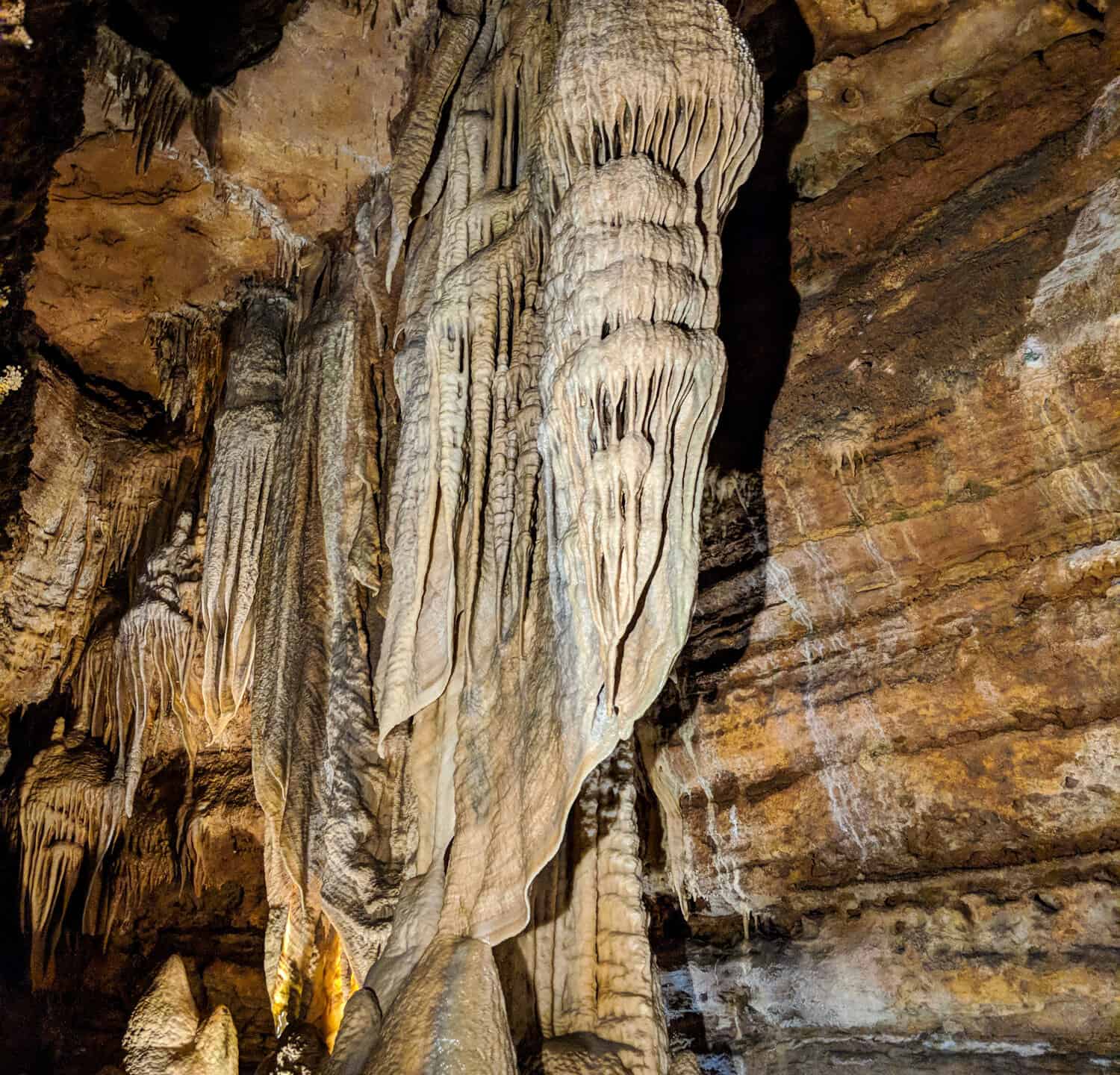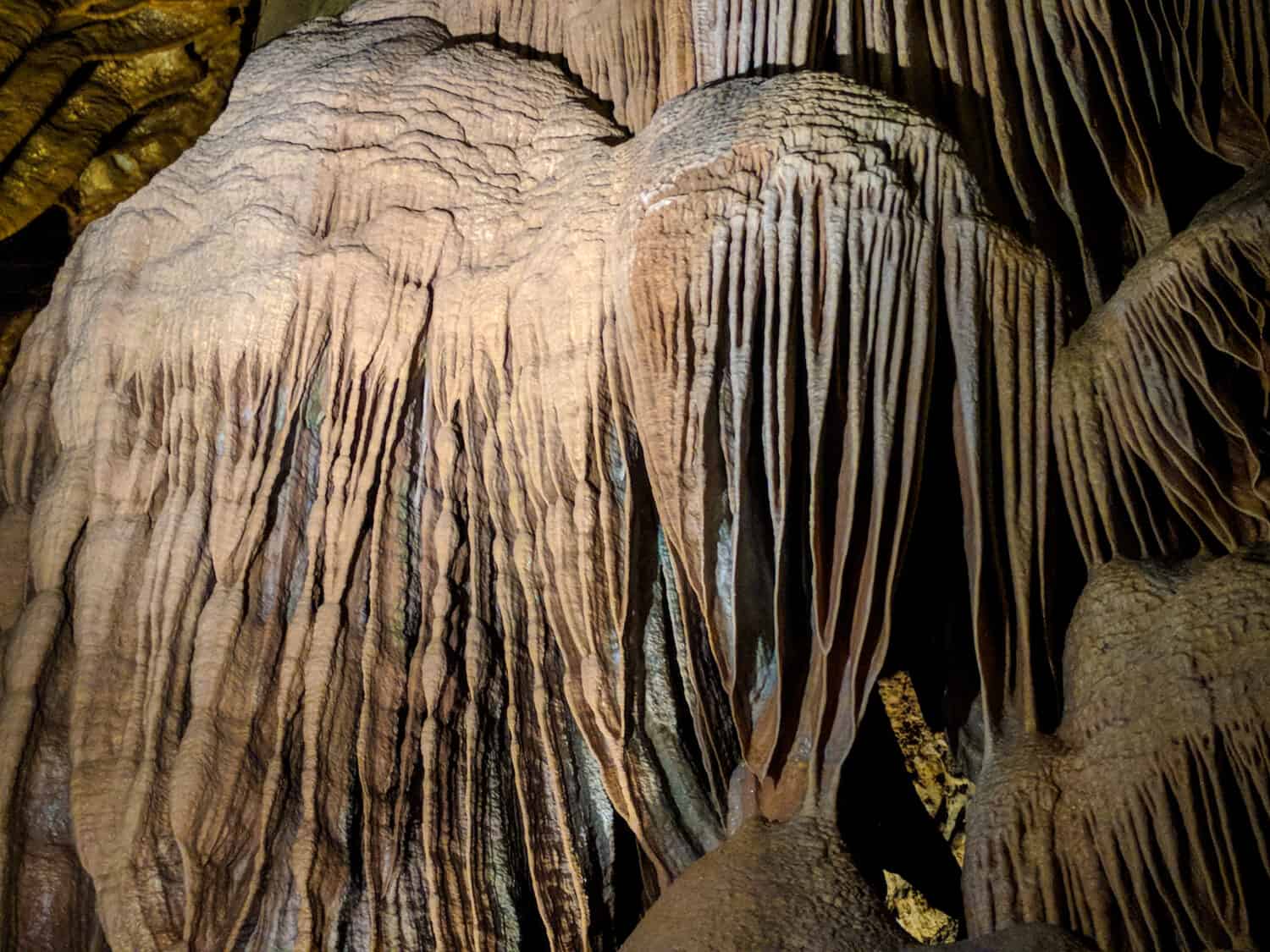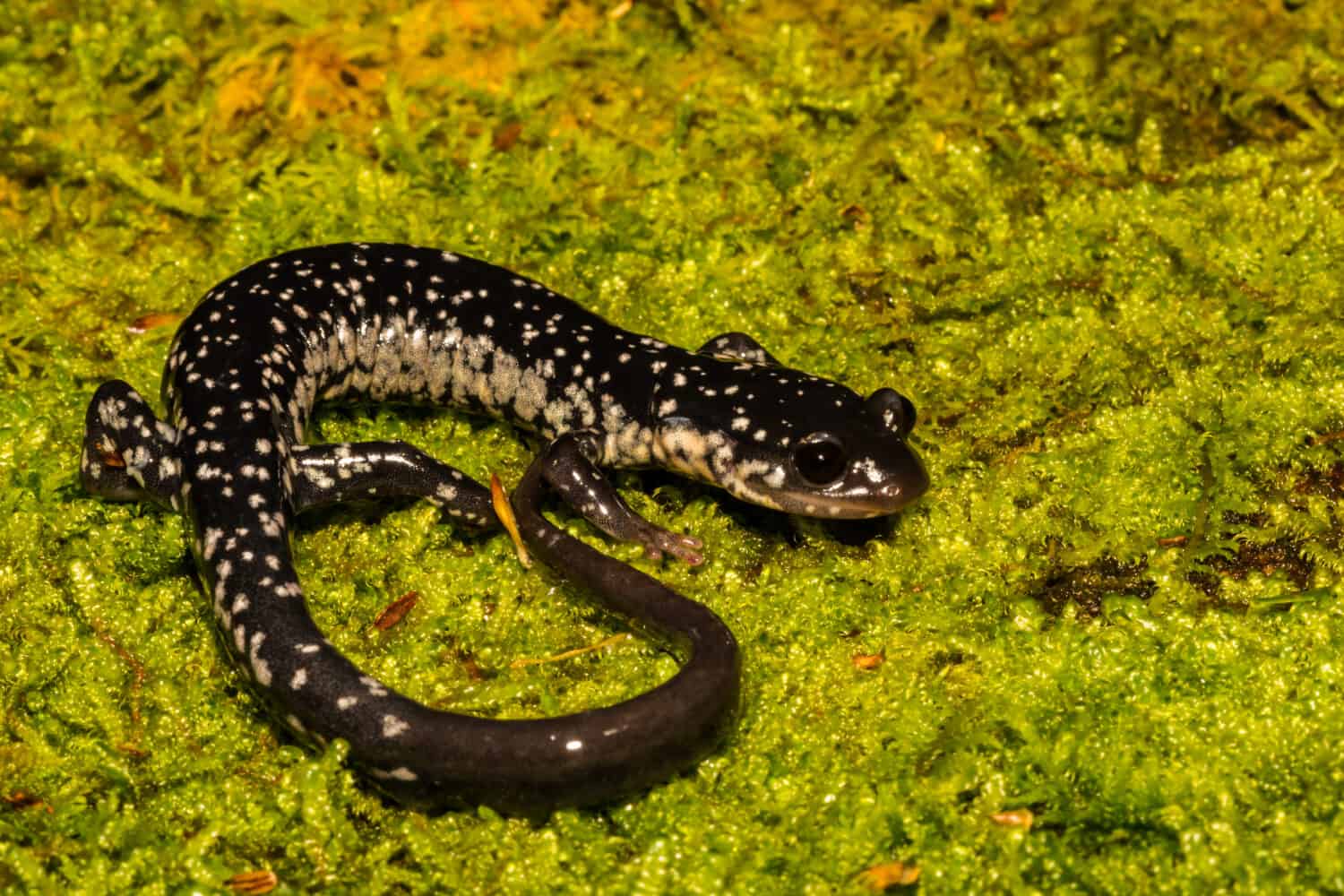The Talking Rocks Cavern is a cavern system located in Branson West, Missouri. Talking Rocks Cavern measures nearly 100 feet deep, 225 feet long, and around 40 feet wide. The cavern supports various wildlife, including crustaceans, salamanders, insects, and even the occasional frog. Additionally, the many structures and formations in the cave offer visitors the opportunity to learn about cave geology and geography in an up-close and interesting way.
In this article, we’ll discuss the history of Talking Rocks Cavern. We’ll also cover the geology and geography of the cavern, as well as what you can expect to find inside. Finally, we’ll explore things you can do when you visit the cavern. Keep reading to learn all about Missouri’s Talking Rocks Cavern.
History of Talking Rocks Cavern

Talking Rocks Cavern was first discovered in 1883.
©J Dyer/Shutterstock.com
Talking Rocks Cavern is thousands of years old. However, people discovered the cavern only relatively recently. The story goes that two boys went out hunting for rabbits one day in 1883. While hunting, they caught sight of a rabbit darting through a small opening. When the boys moved a rock near the opening, they noticed a deep hole in the ground. This represents the first known discovery of Talking Rocks Cavern.
In June 1896, the first expedition set out to explore the cavern system. The expedition was funded by the Irwin family, who owned the land where the caves are located. They contracted Truman Powell, a local cave expert, to explore the cave. Truman, his son William, and four other explorers descended into the cave.
The first commercial tours of the cave started in 1920. At that time, visitors had to carry a kerosene lamp to see in the darkness of the cave. Moreover, there were no stairs leading down into the cavern back then, so visitors had to make the descent via a rope ladder. A small shed wall that used to stand near the opening of the cave still stands to this day, and now forms part of the visitor center wall. All modern tours of the cave start at this feature.
Herschend Family Entertainment purchased Talking Rocks Cavern back in 1969. Since then, the company has operated the cavern as a theme park and “edutainment” location. The company expanded activities at the cavern, including putting in additional activities, expanding tours, and building a gift shop. Over the years, the company also put on special events in the cavern, including Christmas concerts.
Geology and Geography of Talking Rocks Cavern

You can find many interesting formations in Talking Rocks Cavern, such as draperies and flowstone.
©J Dyer/Shutterstock.com
Talking Rocks Cavern was formed thousands of years ago. The limestone cavern formed because of acidic water dissolving the rocks in the cavern. The water turned acidic as it absorbed carbon dioxide located in the soil above the cavern. Over time, the water collected minerals on its journey through the cavern. These minerals eventually formed the many formations and structures that you can see in the cavern system today.
Talking Rocks Cavern is a vertical cavern that measures nearly 100 feet deep. People used to call the cave Fairy Cave and Fox Hunter Paradise Cave due to its tiny entrance and deep drop. Today, 265 concrete steps lead down to the bottom of the cavern instead of a rope ladder. These steps guide visitors through the main portion of the cavern.
That said, this main chamber represents only a small part of a much larger cavern system that extends out around this cave. This water drainage system delves much further and deeper than what you can see on the tour. Numerous side passages branch off from the main cavern and travel 40 to 50 feet before terminating in dead ends or narrow gaps too small for people to pass through.
On especially rainy days, a small pool of water collects at the bottom of the cave. This water empties into a small tunnel that drains into nearby Table Rock Lake.
What You’ll Find Inside Talking Rocks Cavern

You can find salamanders, such as the northern slimy
salamander
, in Talking Rocks Cavern.
©Jay Ondreicka/Shutterstock.com
Talking Rocks Cavern contains numerous interesting formations, structures, and wildlife. The main cavern features thousands of stalactites and stalagmites, cave formations created by mineral deposits. Stalactites appear like rocky icicles that hang from the ceiling, while stalagmites look similar except that they rise up from the cave floor.
Inside the cave, you can also find draperies, which are formations made by calcite-rich water flowing along an overhung surface. As the water travels downward along a sloping ceiling or wall, the water loses carbon dioxide and becomes more saturated with calcite. Eventually, the water deposits the calcite in thin, wavy trails that look like curtains, hence the term draperies. You may also know the formation by its other name, cave bacon, which refers to draperies with a brown or beige color that makes it look like bacon.
Within Talking Rocks Cavern, you will find the Cathedral, a 90-foot-tall, 50-foot-wide canopy that visitors can walk through during a tour of the cavern. Another notable formation includes a 65-foot-tall column that resembles an angel with a bowed head and outspread wings.
Talking Rocks Cavern also serves as a home to a wide variety of wildlife. Animals that make their home in the cave include aquatic crustaceans, 5 species of salamanders, and cave spiders. On occasion, pickerel frogs may also wander into the cave. While bats used to inhabit the cavern, they vacated the cavern shortly after the construction of the Talking Rocks Cavern gift shop. However, don’t fret because the bats didn’t perish, but merely relocated to other nearby caves.
Visiting Talking Rocks Cavern
More than 38,000 people visit Talking Rocks Cavern each year. The caverns are open year-round except for Christmas Day and Thanksgiving. Hours vary depending on the time of year. From June to August, the caverns are open from 9am to 6pm. September to December, the cavern opens at 9:30am and closes at 5pm. January uses the same schedule, except for on weekdays when the cavern opens later at 12pm. The 9:30am to 5pm schedule resumes in February and goes through May.
The tour through Talking Rocks Cavern takes approximately 1 hour to complete. No reservation is required, as you can purchase tickets on your arrival. Prices vary depending on the age of the ticket holder. Children between 0 and 3 get in free, while children between 4 and 12 cost $16.95 each. Adult admission applies to entrants aged 13 and over and costs $26.95 per ticket. Active-duty military and veterans enjoy a discount on admission. Be advised, while any able-bodied person can enjoy the cave, the cave is not accessible for people in wheelchairs or with mobility issues.
While at Talking Rocks Cavern, visitors can also enjoy numerous other activities. You can play a round of mini golf at the Cave Country Mini-Golf course, or crawl through the SpeleoBox crawl maze. The cavern also offers gemstone mining at the Sluicing area, as well as 4 different above-ground nature trails. The family games area provides visitors the chance to play giant versions of chess, checkers, Jenga, and Connect 4, as well as cornhole, ring toss, bean bag toss, and a rock-climbing wall.
Lastly, make sure to check out the Talking Rocks Cavern gift shop at the end of your visit. This 4,000-square-foot room offers plenty of memorabilia that you can purchase to remember your trip to the cavern.
Thank you for reading! Have some feedback for us? Contact the AZ Animals editorial team.








